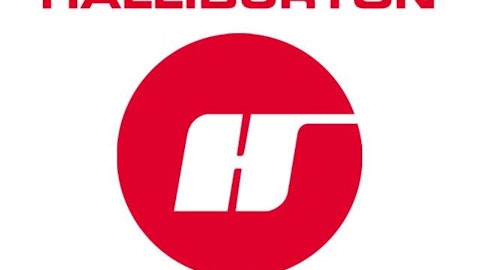Historically, the energy service industry has been dominated by two companies: Schlumberger Limited. (NYSE:SLB) and Halliburton Company (NYSE:HAL). The former has been handed the “best of breed” mantra for many good reasons, but I suspect that the latter has closed the gap and very well is challenging Schlumberger for the crown.
In this article, I’ll offer some evidence to support my view.
The acid test: stock performance
Let’s start with what matters to most investors: stock performance. Halliburton Company (NYSE:HAL) stock has outperformed Schlumberger Limited. (NYSE:SLB) over the past one, five and ten-year periods. Here’s a graph comparing them over the past year:
Courtesy of google.com/finance
Indeed, the five-year total annualized return (including dividends not reinvested) shows that Halliburton Company (NYSE:HAL) bests Schlumberger Limited. (NYSE:SLB) 23.0% to 17.4%. The ten-year performance record likewise puts Big Red on top 14.7% to 13.4%.
The Balance Sheet
The first place I look when evaluating a company is the balance sheet. In particular, I like to review liquidity, debt, and returns. For Energy Service companies, I check the Asset Utilization ratio.
Here’s a quick comparison between Schlumberger Limited. (NYSE:SLB) and Halliburton Company (NYSE:HAL), using the aforementioned balance sheet metrics:
Summary analysis: Halliburton Company (NYSE:HAL) meets or beats Schlumberger Limited. (NYSE:SLB) in most of these balance sheet metrics. While both companies sport strong balance sheets, Halliburton is somewhat superior on these measures.
Margins and cash flow
For energy service companies, a key operating metric includes trends in operating and net margins. operating margin offers a look into how well the company is performing within its core businesses: operating revenue less operating expenses. Items like corporate overhead and interest expense are excluded. Net Margin are the after-tax earnings that get to the bottom line.
Since we’ve established that Halliburton has provided investors superior stock returns and possesses a balance sheet at least as good or better than the much-larger Schlumberger, we will now concentrate only upon Halliburton’s margins and cash flow.
Margins
Halliburton has experienced improving margin trends over the last several quarters. Here’s a table exhibiting operating and net margins:
Halliburton Margin Analysis
We see that operating margins have been on the upswing, reaching 14.2% in the quarter ending June 30. However, this remains below the level attained in the period a year ago. However, Halliburton management provided investors 2013 guidance that forecast year-end margins climbing back to the mid-teens. If so, more net earnings will get to the bottom line with the expectation that the stock price will follow. Since corporate revenues are likewise projected to continue upward, the combination of higher sales and margins should result in a boost to 2013 earnings per share.
Cash is king. While many Wall Street analysts concentrate on earnings, cash is really where the rubber hits the road. A quick check to determine if a company’s earnings are translating into real cash can be determined by comparing EPS with cash flow per share. If the two are relatively proportionate, it’s a good screen to look at before deciding a deeper dive is required.
For the first six months of the year, Halliburton reported $1.50 operating earnings per share. The corresponding per share operating cash flow has been $1.59. Therefore, the earnings-to-cash conversion ratio has been greater than 1, indicating that the company is actually generating more operating cash than earnings for its investors. That’s a good thing.
Valuation
So far, Halliburton has registered positively on a number of investment measures. However, as equity investors we need to determine not only how the company is performing, but whether or not the stock is a good buy. Even the best business may be a poor stock investment if one overpays for the shares.







